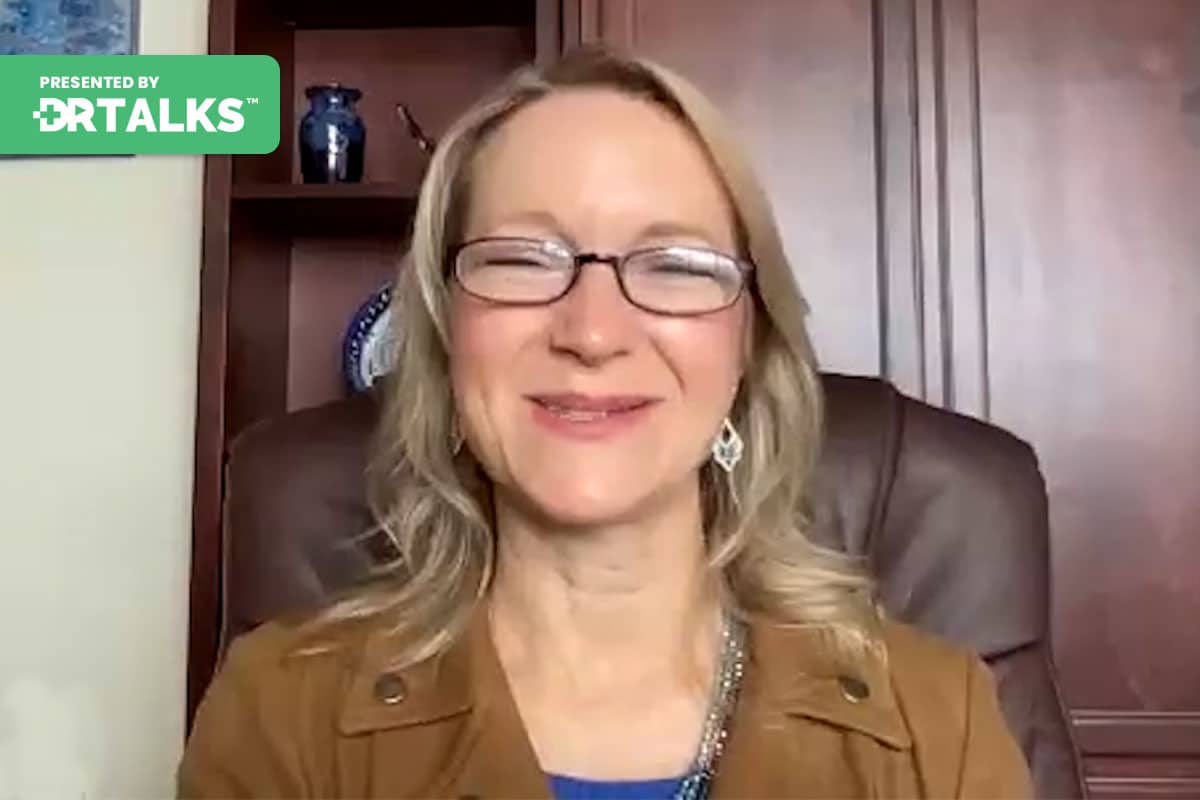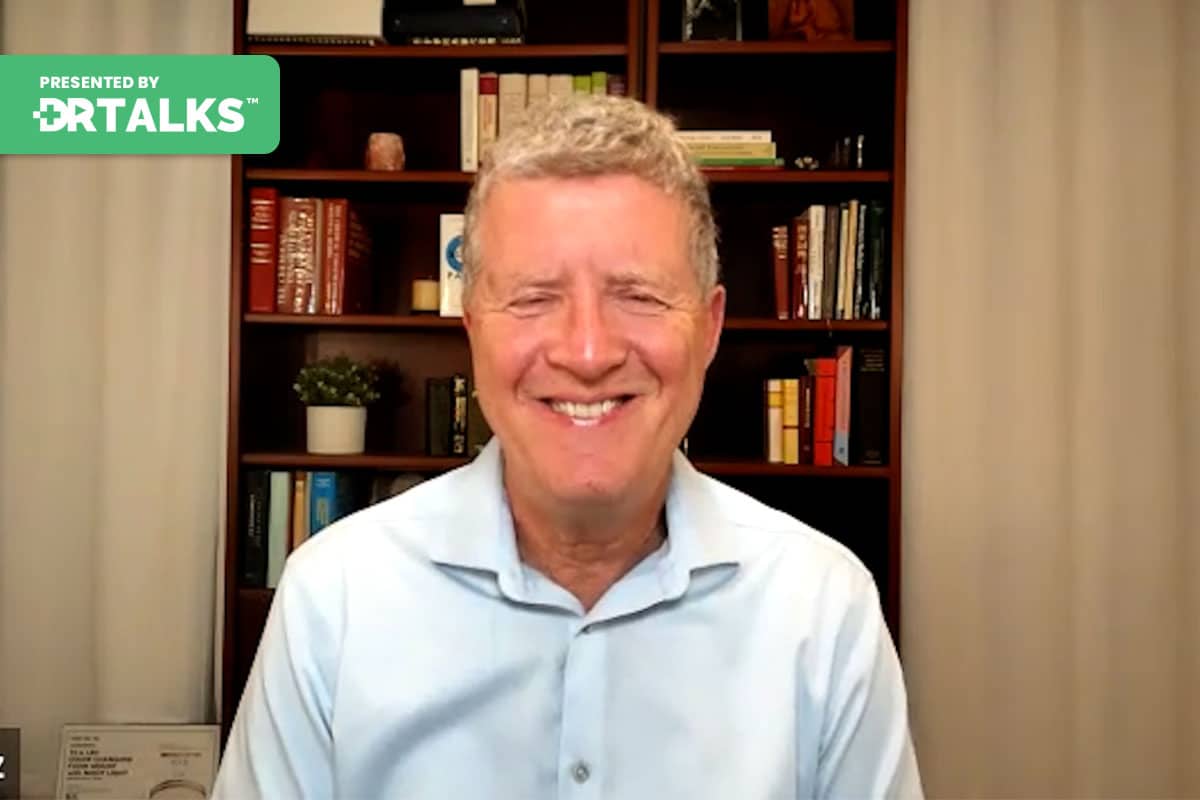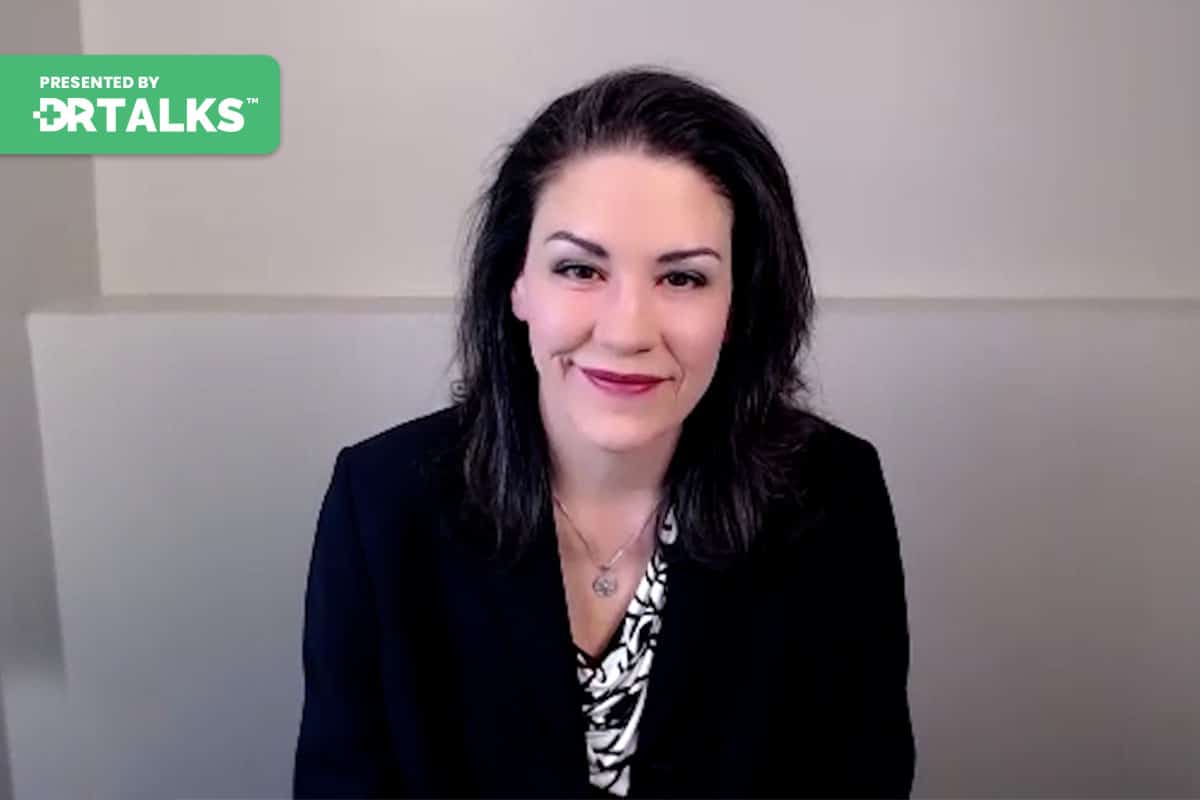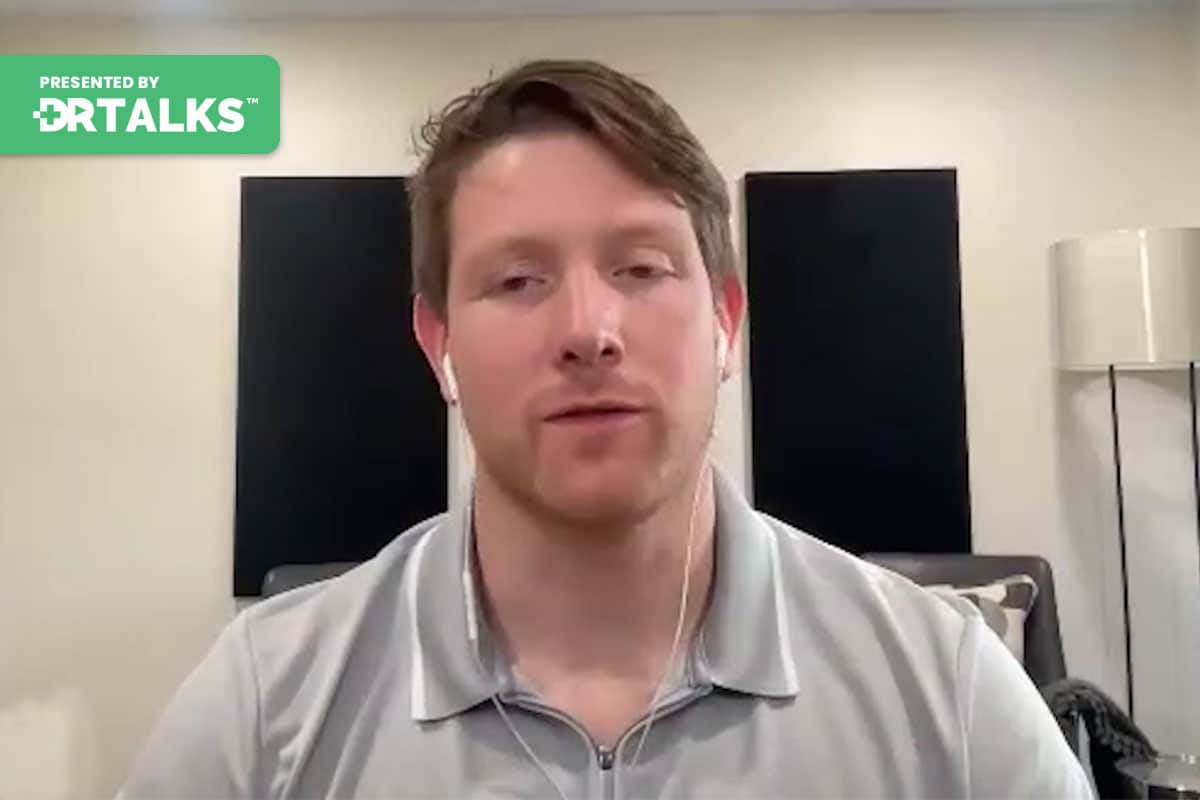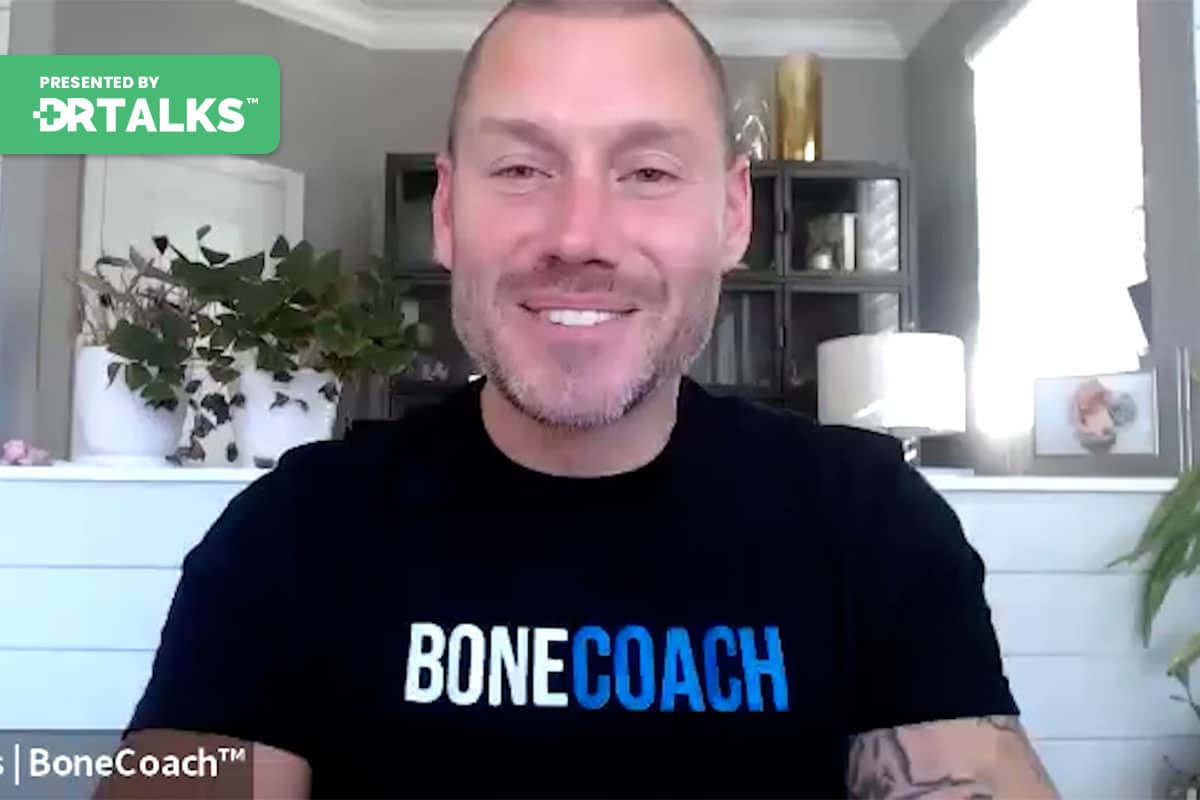Join the discussion below

Dr. Bredesen earned his MD from Duke University Medical Center and served as Chief Resident in Neurology at the University of California, San Francisco (UCSF) before joining Nobel laureate Stanley Prusiner’s laboratory at UCSF as an NIH Postdoctoral Fellow. He held faculty positions at UCSF, UCLA and the University of... Read More

Kristine Burke, MD is a triple board-certified Functional Medicine Physician, Entrepreneur, Author, Educator, and Researcher. She is an expert in the reversal and prevention of chronic diseases such as dementia, diabetes, heart attacks and strokes. She has a special focus on mold-related illness and its connection to many conditions including... Read More
Dr. Kristine Burke discusses the potential benefits of ketosis on your brain function
- Hear about a case study that shows ketosis can work for some people
- Learn about exogenous ketones and why you may want to use them in your diet
- Explore how different health situations will affect how you should approach ketosis and ketogenic practices
- Learn about how to effectively supplement your diet to improve your lifestyle
Dale Bredesen, MD
Hi, everybody. It’s a real honor today to have Dr. Kristine Burke, who is from the True Health Center here in California and has been getting some wonderful results and is one of the physicians involved in our trial. So, Kristine, I know you’re busy. Thank you so much for making time to talk to me today.
Kristine Burke
My pleasure. Thank you so much for inviting me.
Dale Bredesen, MD
Thanks. And I want, you know, wanted to start you you said something which I thought was really interesting and very important. A number of our trial zooms ago where you pointed out that you had observed over the years in caring for patients with cognitive decline, that if you do the basics, the things that are, you know, improve their inflammation, their improve their energetics that are going to improve their gut health. And in the basics that you would see improvements that would be somewhere, if I recall correctly, was 9 to 12 months. And then you said if during that time you could find out the specific drivers mycotoxins, lyme related, other tick borne illnesses, you know, other things, toxic exposures and then address those, they would then sustain their improvement. But if not, you would at least have gotten that first period. But then they would begin to have some decline. And it was so interesting to me, not only because I think it’s important for everyone to understand that you don’t have to find the micro toxin on day one. Get the work up going, get people better with their own, with their basics. And, you know, Julie G that we worked with for years is such a great illustrator of Just Your Point. So she actually began around 2012 and she actually had about 4 to 5 years of clear improvement. She when it was well documented, she went from 35th percentile to 90th percentile.
And then after about 4 to 5 years, she clearly noticed things were not quite right. And at the time, I told her, you know, there’s something that’s been missed. Well, it turned out in the long run she had both. But she had Birbiglia, which had been undiagnosed. She remembered when the tick bite was, which was ten years before the treatment. But because she was treated for Lyme successfully, but she never had the Birbiglia treated, then she started that with Dr. Zweig, and she’s done very well. Then it turned out she also ended up having mycotoxins exposure. Her TGF beta was 40,000. So she’s a great example of exactly what you pointed out. I think she was so careful with all these things that she actually got a pretty good time. So tell me about how did you first notice that and is that is that the approach that you’ve taken with your patients?
Kristine Burke
Yes, it is, absolutely. I think, you know, we when we initially started using the protocol back in 2016 or 2017, I think it was we we noticed that right away we would see improvement. When you got people into ketosis, they would have improvement in their cognitive symptoms. And then, you know, we would get their hormones going. We would kind of balance all of the foundational items. And then, as you mentioned, then we would start to see that over time either if we identify that mold or sirs was a significant component in their clinical picture. And then for whatever reason, they didn’t necessarily buy into it or they didn’t have the resources to address it, or they ended up in the hands of the, you know, the wrong mold. Inspector that did an air test and told them everything was fine. Whatever, whatever the reasons were, we just started noticing that we would that we would see them begin to decline. And that’s, of course, super frustrating for the patient and it’s very frustrating for our whole team as well. But it does help us to to get the patient then to focus in on the things that they’ve been trying not to have to address because nobody wants to deal with that component. It’s difficult. It’s a huge upheaval in people’s lives, in their homes, and it’s expensive. And so I understand why people try to put it off and hope that that’s not really the case. But now that I’ve been doing this for a good number of years, it clearly is a critical piece of moving the needle and sustaining the improvement.
Dale Bredesen, MD
Absolutely. And when you’ve seen people that have dealt with this, have they been people that have remediated their homes? In other words, do you think that remediation can work or do you do you feel that people have to literally move to a new place?
Kristine Burke
No, I’ve seen it work in both of those instances. So one of the patients that I know I’ve shared with you quite a few times was a woman who was in her late sixties. She had an amnesty presentation. But also a lot of executive function impairment. She didn’t feel comfortable cooking anymore because she couldn’t follow a recipe or she’d pull things out of the refrigerator and then forget what she was doing with them. I don’t know why this is out. And she’d put it away or she’d walk away while things were cooking and then not remember to go back. And she also had really withdrawn from her social circle. She’d been a very social person, loved going out with her, with her girlfriends, going to lunch. And she had noticed that she wasn’t able to remember the stories about what was going on in her friends’ lives. And so that was embarrassing to her that she would come back to the next luncheon and then not be able to remember or stage something inappropriate because she didn’t recall something substantial that had happened in one of her friends’ lives. And so she was really shrinking back, just withdrawing from the social situations and then things around her family as well, because the same things would happen with her family. So when we started working with her, she started off with a up of 20 and we did the foundational pieces and we identified that there was mold in her and mycotoxins in her and then also in the rental home where they were living.
Well, because it was a rental, they just hightailed it right out of there. And she had this dramatic improvement. And within a year, up to a mokwa of 27. And so it made such a huge difference. So I definitely feel like the big swings that we will see in terms of cognitive improvement happen when we can eliminate or substantially minimize those bio toxin exposures. Now, interesting, with her case, she was reengaging in everything. She had her life back. It makes me want to cry. Even thinking about her, she was always very emotional and super grateful because it was so life changing for her. But she at one point, I think about two years into our work together, kind of decided that she had it down and she didn’t really need the support anymore. And her MOCA slid back down to about 21. And we discovered that the place that they had moved to on the back on the East Coast had mold. And once she got out of that and kind of got back engaged again, her MOCA came back up to 26. So that was a really clear, better, worse, better scenario.
Dale Bredesen, MD
So very interesting. Very interesting. And as you said, with an agnostic presentation, so which, you know, often these people don’t have amnesic presentation. So that is very, very interesting. And it.
Kristine Burke
Was really. Yeah, yeah, it was really interesting. I think the most common thing that we see when it seems like it’s bio toxin and related is the word finding and the difficulty with remembering what it is that they want to say in the moment. So. Interesting.
Dale Bredesen, MD
Good point. And you then also mentioned just recently that you had just someone who just just had come in recently that had some that had some very nice results. And could you talk a little bit about that?
Kristine Burke
Yeah. So that was the patient we were talking about a week or two ago. So she was a women’s health nurse practitioner. She’s retired now and I think she was in I think she’s about 71 when she started seeing us and her initial MOCA was about 22. It was 22. And same thing with her. We identified, you know, she needed a hormone replacement. She had some heavy metals that we dealt with. She had some inflammatory markers. We got her into ketosis and all of those things swung the needle up for her. And we got her to a 26. And then that second year it drifted back down to 22, even though she was still doing everything and we had maintained those parameters. So we on her horse’s markers, they were markedly abnormal, not quite as bad as as Julie’s. That’s a phenomenally elevated TGF beta that she had, but they were significantly elevated. And so we were able to identify that there had been a water intrusion event in their home. And we, you know, found the mold. Got that dealt with. And then her MOCA came right back up to 26 after we got that inflammatory. It got her out of that inflammatory environment.
Dale Bredesen, MD
Well, I think it’s helpful for all of us always to hear about tips, things that you’ve learned over the years. Obviously, you’ve been doing this now for six or seven years. And, you know, what’s the thing that has surprised you the most to say, wow, this is something that I really want to remember because it’s really helped many patients or even a few patients. Are there tips that you have for everyone to get better outcomes? That’s obviously the goal for all of us. How do we get the best outcomes?
Kristine Burke
Yeah. So I think that, you know, as they have had people referred to me who have seen other Recode practitioners and had that experience, that you’ve either had some improvement and then declined again or they’ve struggled to have sustained improvement. It’s usually because the bio toxins haven’t been addressed. And so I think, you know, but that’s a pretty specialized area and not everybody is necessarily interested in working in that field. And so I think what’s really important is if you’re doing this kind of work and you’re and you’re getting this solid foundation created with your patient, and this isn’t an area that you’re skilled in or interested in, that’s the appropriate time to refer these patients. And then once that’s dealt with, they could they could come back into your care. But I think when we hang on to patients, when we don’t have the full skill set that we need to get them to the finish line, that’s really where I’ve seen patients given a disservice. So that’s one piece. I think definitely when we can get them into ketosis, we see the brains wake up and when we can sustain that, we see better compliance, like better capability to participate in the program and do the things that they need to do.
Unfortunately, that supplement burden, as we all know, is is high and we’re still early in this. I know this is something we’ve talked about a lot in the research project that we haven’t yet gotten to, the place where we know which things move the needle the most other than the bio toxin piece which we’ve talked about. I think that’s really key. And so it’s it’s hard to help people navigate that, especially over a prolonged period of time. And so I think sometimes we need to do a little, you know, a little bit of the dance with the patient to try to find where they’re comfortable with their supplement, with the amount of supplements that they need to take to help support their physiology. And the labs, of course, help with that, because if we can get something improved and then we can decrease the amount of support that they that they need and we can maintain it, then that corroborates that. We don’t need as much as we needed at the beginning to help us get to where we wanted to get to get to the goals on the various nutrients or the hormones or whatever that particular item may be. And so that negotiation.
Dale Bredesen, MD
And have you used exogenous ketones early on to help them get into ketosis? Or do you feel there’s a role for exogenous ketones?
Kristine Burke
Absolutely. We use a misogynist ketones a lot, especially at the beginning when people are getting their sea legs with that dietary change. Because it’s a sea change for most people, especially. You know, most of these patients tend to be in their, you know, in their older years. And so this is a really, really different way of eating. And it’s a complete paradigm shift from the indoctrination that they had during the low fat years, which was the predominance of their adulthood for most of them. And so it’s hard for them. They feel like they’re doing something wrong. They feel like they’re going to have a heart attack from the food that they’re eating. And so using those exogenous ketones at the beginning so that we can get the brain, the fuel that it needs while we’re helping that patient navigate that significant life change.
Dale Bredesen, MD
Yeah, great. And then what do you do with people who are frail? So if someone comes in to see you and they are, you know, got a BMI of 18, these people don’t have a lot of fat to burn. Sometimes. And so what do you recommend to them? As I know, certainly, we’ve all seen people who will start to try to get into energetic ketosis, do these long fasting periods and actually take a step back instead of forward. Because, yes, they’re now they’re going to be more insulin sensitive, but unfortunately, they just don’t have the fat to burn. And so they’re kind of in a, you know, energy emergency for their brain.
Kristine Burke
MM Yeah. Those are really difficult ones to navigate I think, you know, like we were just talking about the exhaustion is ketones are particularly useful there. We will often, I mean we try to cycle them in and out of ketosis if we can, if they’re, if they’re, we will tolerate that. Sometimes we have to just downshift into a form of, you know, kind of a mitochondrial type food plan where we’re trying to minimize the things, you know, certainly improving their blood sugar regulation. We do a lot of continuous glucose monitoring with patients so that we can try to, you know, straddle that fine line if we’re not able to get them into ketosis and keep them in ketosis because of the frailty.
Dale Bredesen, MD
Yeah. And have you seen either a primary progressive aphasia, PPA or PCA costar cortical or steer cortical atrophy? These are two of the typically non-domestic presentations that are out there. They’re actually you know, they represent a they’re minority, but it’s a significant minority. And so we hear about those relatively frequently. Have you dealt with patients who have either primary progressive aphasia or close to your cortical atrophy?
Kristine Burke
No, I really haven’t. I had one patient come through my hands, but it was really early in my journey and I didn’t feel confident or equipped to treat her. And so I referred her out. And that’s the only one that I’ve seen come through. I have had a couple of patients that had concurrent Parkinson’s, generally on the milder side. And as part of their presentation or even one that it developed through the course of our work together, which was really interesting. And interestingly, that was a family that really struggled to get the mold out of their home, out of their living environment. And so, you know, whether those are directly related or not, we’re still have to figure that out. But I think there is an interesting connection between the gut dysfunctions that are very common in people who are living in a moldy environment. And then the risk of Parkinson’s that’s associated with that gut brain axis dysfunction.
Dale Bredesen, MD
Yeah, a good point. And then what are you using typically for mitochondrial support? What are your favorite approaches for the energy side of things?
Kristine Burke
Yeah, so we use a lot of glucose, iron and we titrate it if you know, if they can tolerate it. We use an AC, we use of course magnesium and co, Q10 and sometimes PCU, but we also use I don’t use as much de ribose as I used to use because it doesn’t seem like that moves the needle as much. But sometimes I might bring that in for a brief period of time trying to think what else. There’s so many things. Oh, a CDC calling will use that to help, to help kind of encourage things. And then on the other side will also use a lot of antioxidants to try to offload what impairs the mitochondrial function on the other side right on our gets in our ribs side. So I’ve recently recently been using something called C60, which is a really powerful antioxidant and it’s interesting because it’s not ATP dependent. So our enzymatic reactions, of course, are somewhat ATP dependent and they have to be recycled, whereas C60, which is carbon 60. I know, you know, but for anyone listening.
Dale Bredesen, MD
I remember the very first presentation on Fullerenes for antioxidants years and years ago.
Kristine Burke
Yeah, yeah, exactly. And so with that, it doesn’t require recycling just the way that the you know, it looks like a giant soccer ball. The way that the hydrogen ions pass through it doesn’t require an enzymatic recycling. And so that’s been kind of an interesting thing and I’ve been playing with that for probably about six months now, about six or six or eight months now. And I really like it as an antioxidant.
Dale Bredesen, MD
Interesting. Interesting. All right. And then on the other side of the coin, the inflammation side of things, what are you liking in that area? And then do you use a lot of resolve ins? And do you use what doses of omega threes do you use?
Kristine Burke
So definitely use a lot of resolving the spms and typically we’ll use those for a couple of months at the beginning and then either pull back on them or maybe pulse them through. Just because it makes more sense to me that if you’re just constantly giving the signal to turn off inflammation and you’re constantly getting the signal from the body to turn it on, that that seems like you would you don’t get as much effect. And in my experience, that seems to be what we see. Like there’s an initial boost from starting them and then it’s the effect seems to plateau. So I like to stop it and then and then pulse dose that gosh, we use resveratrol and alpha lipoic acid and we use bicycling Chinese skullcap. So for the anti-inflammatory impact in the brain because that does cross the blood brain barrier as an anti-inflammatory, a lot of curcumin, we’re cautious with the dose on the curcumin because as you’ve taught me, at higher doses, curcumin can be anti amyloid beta.
And so we don’t want to use that too early on when the amyloids there, it’s a protective mechanism for the Omega threes, we typically will use about two grams a day, mixed EPA and DHEA and about about 5050, sometimes a little bit higher on the DHEA, particularly if they have a history of head trauma that’s not super remote. Right. And we will titrate that. Most people don’t seem to need more than about two, maybe three grams, occasionally four. But we seem to be able to get all of the omega three indices up above 8% using two or three plus also with the diet. Right. The dietary change, they’re bringing in more of that from the food side as well. So they don’t need quite as much supplementation.
Dale Bredesen, MD
Right? Yes. I was going to ask you, what is your target for Omega three index? It sounds like it’s greater than 8%.
Kristine Burke
In this.
Dale Bredesen, MD
Thing. Okay, great. And then you had mentioned very interestingly about Omega client that you like that I know you and Dr. David Horsey both like that particular test. What are the things that you like to glean from that test that you feel are helpful in your practice?
Kristine Burke
Yes. So it’s so Omega Quant is the original Omega three index. So it’s looking at the percent of Omega threes in the red blood cell membrane. And so in a healthy cell, right, we want to have somewhere between eight and 12% of the of the membrane lipids from the omega threes. And so that’s where the 8% as the minimum comes in on there’s three different tests from Omega Quant. So there’s a basic where we’re just getting the Omega Index that’s the least expensive one for patients to get. So we know we know what their red cell membrane percentages. And then on the plus test, we also get the EPA and DHEA, the actual percentages of those we get and arachidonic acid to EPA ratio. So we can really see the balance of the inflammatory and the anti inflammatory with that. And then we also get the trans fat so you can see how much trans fat is in the cell membrane, which is particularly interesting in this age group. Again, back to, you know, earlier in our conversation where we’re talking about the indoctrination during the low fat craze because so many of the foods that the packaged foods that were commonly eaten during those times were full of these trans fats. And you can see sometimes that there’s higher levels or if people have been eating those kinds of snack foods before we get our hands on them and start changing their diet. But we can see that change pretty quickly. And people, I think they like being able to see that something that they’re changing has really accomplished something because the diminishment of the trans fat percentage is 100% on the patients choices. We’re not doing anything you know, unlike other things where we’re supplementing it or we’re augmenting it or were prescribing it and so were manipulating their values on that one. It’s all of them.
Dale Bredesen, MD
Interesting. And you know, David Hussey yesterday had mentioned the issue of finding that some people actually turned out to be on counterfeit extra virgin olive oil, not real extra virgin olive oil and that this was actually picking that up. Have you run into that same problem?
Kristine Burke
You know, that when you’re going to pick up on the advanced Omega test. So that gives you the full complement of the Omega threes. And I don’t get that one quite as frequently because, well, it’s more expensive and we’re doing an a mega quant on all of our primary care patients as well. And so that’s the lion’s share of where I’m getting that testing and then I see fewer of them in my cognitive patients. But now that after our discussion last night where he was talking about that, that definitely piqued my interest. And I’m going to have to encourage some people to do the advanced testing so I can see what’s going on.
Dale Bredesen, MD
Yeah, great point. So let’s talk for a minute about vascular component, because there’s no question many people, you know, when I was training many, many years ago, we were taught to do a Kuczynski score that was going to tell us whether it’s Alzheimer’s or whether it’s vascular dementia. And now it’s turning out that these are intimately related. Yes, there are some people who have, you know, zero essentially zero Alzheimer’s who have just a vascular dementia. But there are many, many people who have vascular compromise as one of the contributors. And indeed, we’ve talked about this, the innate immune system where the memory is stored in part in your bone marrow, in part in your tissue, macrophages, your microglia of your brain, but also in your endothelial cells. And so you now have a state where you are more coagulant ble than usual. You have all these micro infarcts all over the place. You just you have a change in your endothelial status. And I know we see all the time on MRI’s where there it’ll say, you know, the person may have diabetes or hypertension because they have small vessel disease with some white matter lesions. One of the most common things you see on MRI eyes and certainly a contributor to cognitive decline. And of course, Cyrus Raji recommends that we get a physical score. But what do you do with people who are likely to have a vascular component to their cognitive decline? What do you recommend?
Kristine Burke
Yeah, so I could not agree with you more. I mean, there’s so much overlap because you can’t you can’t heal tissue that’s inflamed if you don’t have adequate blood flow and you’re not going to have, you know, sufficient blood flow if the endothelium is dysfunctional, even if you don’t have any plaque or clogging of the pipes. As I like to say to the patients, you have this dysfunctional endothelium that does not allow you know, we lose the ability to produce nitric oxide. We lose some of the elasticity of the vessel, just this whole cascade of events that contributes to that vascular dysfunction. So we use a lot of support for the endothelial. Calyx And by helping to restore a healthy Calyx that improves some of the coagulation parameters because we have within the glycol, Calyx, we have how’s our von Willebrand’s factor? Our heparin sulfate is a significant component in there and as well as our fibrin fibrinogen. And so that balance of coagulation is really maintained within that endothelial glycol, Calyx. And the glycol Calyx is damaged by all of the things that damage our health in general. So hypoglycemia, you know, poor food choices, chronic inflammation, all of those types of things are going to also damage the glycol. Calyx Well, when we have a denuded glycol. Calyx We have impaired nitric oxide and then we’re not getting the vascular dilation and the delivery of blood flow. So we also use supplemental support to improve the production of nitric oxide. We use food support for that beets, beetroot powder, those types of things. And I don’t know if I’m allowed to talk about products that I use, but that’s really something that I will reach for whenever I see that we have a significant amount of small vessel disease or white matter lesions.
Dale Bredesen, MD
Yeah, great. And yeah, that’s fantastic. So I’m assuming, you know, we’re all interested in the best outcomes. So it sounds like you probably use our cell HP, which you have mentioned before. And do you ever like things like Ginkgo? Do you ever use those?
Kristine Burke
I do use ginkgo. I use it in there’s a couple of blends that we utilize that have ginkgo in them. We’ll also use VIN posting a if they have a more vascular component and you know, if you see either from their carotid. CMT that they tend to have some plaque or they have thickening of their there into more medial thickness. So they have an advanced vascular aging. Those are all triggers that would make me think about using one or both of those.
Dale Bredesen, MD
And on the clotting side, do you like pic knowledge and all or not? Okay. Sort of lumbar okay. Or what do you like there?
Kristine Burke
I use a lot of nasal kinase. I use less, but definitely use lumbar or kinase in part because it is significantly more expensive, also in part because it is systemic. And when we get more biofilm disruption with the use of lumbar kinase and I’m usually not ready for that early on in the process. Right. We’ve got to build our full foundation. We have to get rid of the mold toxins. Then when I’m ready to start dealing with the the significant tissue dysbiosis, i.e. Lyme bartonella, the BCA, you know, the tick-borne infections, then that may be when I would reach for lumbar kinase.
Dale Bredesen, MD
Yeah, great. And then let’s talk for a minute about the genetic tests. Of course, Dr. Sharon Houseman, Colin has put together Intelex, which has been very nice Intelex DNA, which we’ve used for the trial. And of course I know that you’ve also used Dr. Yael Jaffe’s approach, and I know Yael came from the nutritional side and set up three explore what sorts of things do you look for on the genetic reports?
Kristine Burke
So we are looking for well, well obviously we’re all looking for the APA haplotype and what their haplotype is there and then we’re looking at their data, oxygen omics. So where are they well-equipped, where are they impaired? We’re of course looking at methylation genetics. We’re looking at what else do we use commonly.
Dale Bredesen, MD
And you look at it from there.
Kristine Burke
I’m sorry.
Dale Bredesen, MD
Do you look at coagulate ability? Yes. From there as well.
Kristine Burke
Yep. Quagga lability. Some of the nutrient transporters can be really useful so that we have an insider’s clue that the patient may need a higher than normal amount of B12, for example, or zinc maybe, or vitamin D. And then what else are we commonly looking at? Oh, interestingly, on the 3×4 report, which is Michelle Joffe, is that when we get a really interesting summary of the way their body responds to exercise and whether they’re, you know, more of a strength type person or they’re more of an Arabic type person. And so that can help in tailoring what they’re getting to enjoy more to in terms of their exercise.
Dale Bredesen, MD
Got it. Okay. And what are these things? Have you translated to your own life? So what do you like to use for yourself so that you’re going to live to be 100 and be sharp till until then or beyond? Who was a Teri Walsh said, you can’t you can’t say to me, you, your desire is to live anything less than 110. So whatever that whatever your desire is, how are you keeping yourself sharp until a ripe old age?
Kristine Burke
So I do a high quality multivitamin with antioxidants. And I definitely take fish oil because it’s really hard to get your omega three level up above eight. We’re even eating salmon regularly. And there’s so many, so many of the other fish that are high in mercury. So we just don’t have we don’t have a lot of options in the high omega three fish. And I do, of course, vitamin D to make sure I keep my level up and I measure all of them so I know where those are. I was gifted genetically from my dad that my HDL is higher than my LDL. So that is an area that I have to worry about too much, which is good. And my HDL works. It’s not dysfunctional, so I don’t have to do a lot in that arena. What else do I use? I do. I kind of rotate my glycolic support, so I’ll use our Tercel for a bit. I’ll use Vaseline also, which is the nitric oxide supplement, and I’ll rotate those if my stress is high, all used some ashwagandha and maybe a little magnolia at night to help downregulate the cortisol impact on balance. My hormones for sure do I do? My own fullness exercises, whether it’s doing, you know, prayer or meditation and exercise. I think to walk, like to walk and I like to do some weights and I love to dance. But that one’s, that one’s harder to drag people into with me.
Dale Bredesen, MD
Yeah. Yeah. And what do you say to people who come to you and say, I know there’s nothing that can be done. I’m having some cognitive issues because, of course, that’s what people are told, that there’s nothing that will delay me. And it’s interesting to me that this is a reverse Alzheimer’s summit. The vast majority of neurologists would say that’s not a topic that can be discussed because there is no such thing. And yet we’re all seeing it time and time again and hearing back from patients again and again. So what do you tell people who come to you and say, you know, I’ve already been to a neurologist and there’s nothing that can be done.
Kristine Burke
Yeah. So I don’t actually get that a lot from patients because they come to me because they know what I do. But in, but in like, like, for example, in my social group or, or with other physician colleagues, that definitely comes up in those in those arenas. And it’s really hard for people to imagine something that they’ve never seen. And so I will try to share stories like how we started off this conversation, like this is what’s possible and just open your mind to what’s possible, and then you have to be willing to think about what are we doing differently that’s accomplishing the seemingly impossible because that’s that’s the difference. The medications, you know, as we’ve talked about many times, we’ll maybe give us a little tiny bit of a bump up or slow our decline. But the decline continues. There’s never improvement at the level that we see with the interventions that we do. And so much of this is just foundational lifestyle change at the core that sets the stage for us to then help the body to heal from all manner of things that it’s accumulated over that the course of that person’s lifetime that has contributed to the degeneration of their tissue and specifically to the tissue in their brain.
Dale Bredesen, MD
Exactly. And for people in general, and especially people, obviously, who have some Alzheimer’s in their families, what do you recommend? As we know, when should they get on prevention? You know, I hear from people anywhere from their twenties to their seventies that have it in their family. When do you recommend that they start a prevention program?
Kristine Burke
Right away, as soon as they have an awareness that this is out there, because the earlier that we start focusing on the components of health that we need to maintain. So our nutrient status, our omega three status, our lifestyle pieces with our exercise and our mindfulness and good sleep, you know, all of those components, those are the foundations that everyone should be doing from the very beginning, because I think if we can do those things and then be mind full of our expose them and the things that our bodies are accumulating and then work on those gradually over time. My expectation then is that that will prevent the development of these degenerative neurologic diseases because they happen because the tissue is receiving repetitive insults and it doesn’t have the tools to repair or it just gets over overburdened with toxin, for example, right, for the mold toxins, for example, which is a really heavy burden. And you’re breathing it, you’re absorbing it, you’re swallowing it every minute of every day that you are. Wherever the heavy mold burden is. So I just did a podcast on longevity and and healthy aging, and this is exactly what we were talking about there is if we build the foundation, then we don’t end up here with the patients that we’re trying to help that already have cognitive symptoms or have, you know, MCI or mild Alzheimer’s or even moderate.
And then we’re trying to do all of these things in a very period of time, because time is bright and it’s hard. It’s really hard to do it that way. It will be much easier just to be paying attention. What are your heavy metals look like? Are they good or are they not good? Well, let’s deal with that. Where are you getting exposed? How do we create an environment in which you’re not accumulating what’s going on with your, you know, other things in your environment? What are your personal care products look like? How much you know, how many phthalates do you have her fuming, your perfume in your home? There’s so many things that we can do that we take for granted that our body can just tackle them and deal with them. But the reality is it can’t not. And they all end up getting expressed in one way or another, whether it’s as diabetes, you know, your your chemical burden is a greater predictor of your risk of diabetes than weight is by a lot like 400 fold. So all of these all of these things that we can do as part of living our healthier lifestyle, those are the things that are going to change the trajectory.
Dale Bredesen, MD
And one final point, which is that a lot of people have been telling me that they’ve run into people who’ve had boosters and had their cognition that was improving. Now it takes a turn for the worse after a booster. And of course, you know, that’s one of the best ways you can activate your innate immune system, which is what we’re trying to deal with. So have you run into this problem? And if so, what do you tell your you know, what do you tell your patients?
Kristine Burke
Yes, we have run into that problem and and we’ve run into it both from the spike protein exposure from the virus and the spike protein exposure from the vaccine race. Both are a huge load of the spike protein. And that spike protein is a vascular toxin. And so we see a lot of endothelial dysfunction that develops after that. We also have seen now studies that have been published on the decimation of the microbiome as a result of both each of them. And so both of those things need to have attention paid to them. So improving the endothelium, the endothelial cycle, calyx, the robust production of nitric oxide, and then improving the microbiome, restore the microbiome so that we have that healthy gut brain axis. So those are the things that we focused on when we see that go off the rails. That’s also where I will reach for that higher dose of the Chinese skullcap, the bike clean, active ingredient, because of the ability to cross the blood brain barrier, which is probably breached at that point anyway. Probably most of the things we’re giving are getting in at that point, leaky little leaky brain barrier. But I will use that in that scenario, and that seems to help us get back. And then I’m also using narrow kinase, because narrow kinase has the ability to break down the spike protein enzymatic. And so that can also be very helpful at turning that around.
Dale Bredesen, MD
Interesting. All right. Fantastic Kristine Burke, thank you for sharing your wisdom, your experience, your expertize. Have a great trip tomorrow and I look forward to talking to you again.
Kristine Burke
Thank you so much, Dale. It was a pleasure.
Downloads

